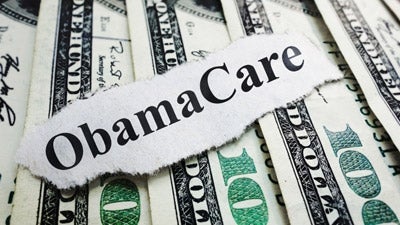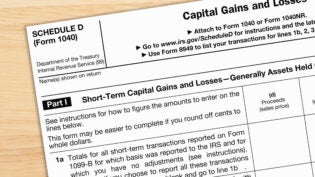Home > Finance > Tax and Accounting >
Employers Face Stiff Affordable Health Care Act Excise Taxes
By: TaxConnections

The Affordable Health Care Act (ACA) (“Obama Care”) may lead to stiff excise taxes for larger and midsize employers that misclassify employees as independent contractors (see §4980H Shared responsibility for employers regarding health coverage). The term “applicable large employer” means, with respect to a calendar year, an employer who employed an average of at least 50 full-time employees on business days during the preceding calendar year. The term “full-time employee” means, with respect to any month, an employee who is employed on average at least 30 hours of service per week. However, employers with less than a 100 employees have a transition period until 2016 for the application of §4980H.
Employers that misclassify employees as independent contractors already face potential tax liability and tax penalties for each misclassified employee. In addition to these current potential liabilities and penalties for misclassification, employers will now face excise tax assessments under the ACA. This new excise tax is $2,000 per employee not covered by a qualifying employer medical plan. However, to encourage compliance with the ACA, if less than 95% of the employees of an employer are covered by a qualified medical employer plan, then a stiffer penalty of $2,000 for every employee of the company may be imposed, albeit with an exemption of the excise tax applying to the first 30 employees.
By example, an employer has 50 workers of which the employer has classified 80% (40) as employees and the remaining 20% (10) as independent contractors. The employer provides a medical insurance plan for the 40 employees that qualifies for purposes of the ACA. The §4980H issue is moot, meaning it does not need to be considered, because the employer does not reach the minimum 50 employee threshold. But now the problem …
The IRS audits the employer and determines that the employer has misclassified the 10 independent contractors, and re-classifies them as employees. The employer has employment tax issues, and penalties to contend with, regarding the 10 employees. But also, §4980H now applies because the employer has reached 50 employees. Worse yet, the employer has not covered 95% of its employees with qualified medical coverage. Instead of 40 employees covered out of 40 for 100% coverage, after audit the employer is determined to have only covered 80% of employees (40 out of 50), missing the minimum 95% threshold. Thus, the excise tax does not apply to just the 10 employees but instead applies to all employees, with an allowance for the first 30. How much excise tax will be owed then? 50 employees, subtracting the allowance for the first 30, leaves 20 employees multiplied by the excise tax of $2,000, thus $40,000 for the year (on top of normal employment taxes and penalties for the 10 misclassified employees).
Classification of a worker as either an “employee” or an “independent contractor” is based on the common law standard of an examination of the facts and circumstances of the relationship between the employer and the worker to assess whether the employer has the right to direct and control the performance of services. Substantial case law has developed from disputes between employers and the IRS, and between workers, who may want to be classified as independent contractors to better leverage tax deductions, and the IRS.
Due to a number of recent changes in the law, taxpayers are currently facing many questions connected to important issues such as healthcare, home office use, capital gains, investments, and whether an individual is considered an employee or a contractor. Financial advisors are continually looking for updated tax information that can help them provide the right answers to the right people at the right time. Tax Facts provides fast, clear, and authoritative answers to pressing questions, and it does so in the convenient, timesaving, Q&A format for which Tax Facts is famous.
This article was originally published by TaxConnections
Author: William H. Byrnes has achieved authoritative prominence with more than 20 books, treatise chapters and book supplements, 1,000 media articles, and the monthly subscriber Tax Facts Intelligence. Titles include: Lexis® Guide to FATCA Compliance, Foreign Tax and Trade Briefs, Practical Guide to U.S. Transfer Pricing, and Money Laundering, Asset Forfeiture; Recovery, and Compliance (a Global Guide). He is a principal author of the Tax Facts series. He was a Senior Manager, then Associate Director of international tax for Coopers and Lybrand, and practiced in Southern Africa, Western Europe, South East Asia, the Indian sub-continent, and the Caribbean. He has been commissioned by a number of governments on tax policy. Obtained the title of tenured law professor in 2005 at St. Thomas in Miami, and in 2008 the level of Associate Dean at Thomas Jefferson. William Byrnes pioneered online legal education in 1995, thereafter creating the first online LL.M. offered by an ABA accredited law school (International Taxation and Financial Services graduate program).
Published: April 14, 2014
2214 Views
2214 Views












